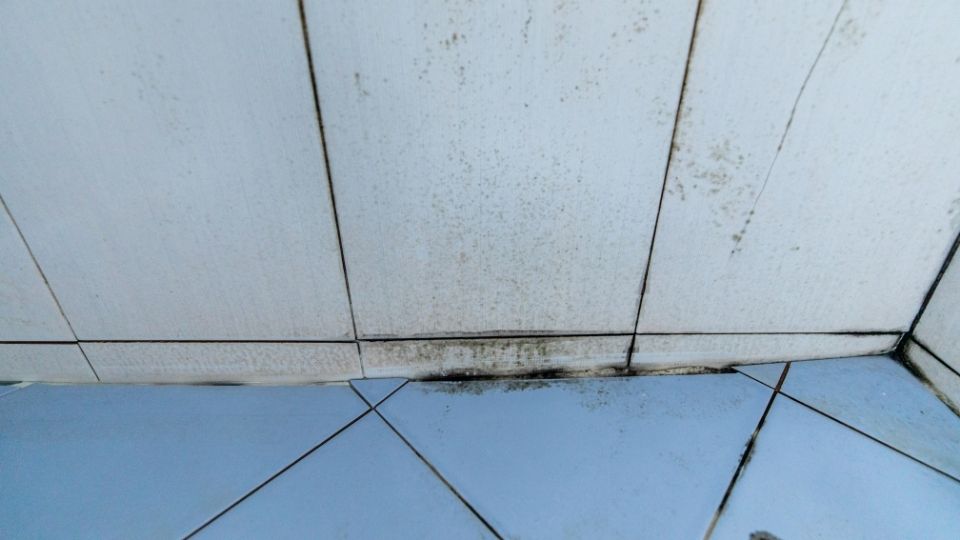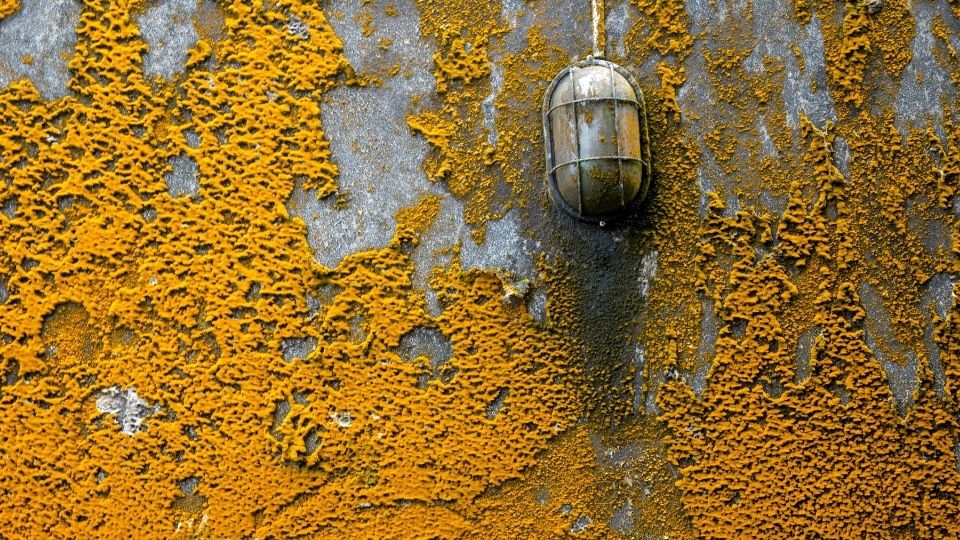
by Mold-B-Gone | May 16, 2022 | Mold Facts
Mold is a fungus that can be found both indoors and outdoors. It is often green, black, or white in color, and it grows in humid environments. Mold can cause a number of health problems, including respiratory issues and skin irritation. But can mold cause sore throats? In this blog post, we will discuss the link between mold and sore throats, as well as some tips for preventing mold-related health problems.
Reactions to Mold Can Vary
Depending on a person’s sensitivity to mold and the amount of mold present, some people may experience no symptoms at all, while others may develop a sore throat, coughing, or difficulty breathing. In severe cases, mold exposure can lead to pneumonia or other serious respiratory illnesses. If you are concerned that you may have been exposed to mold, it is important to see a doctor as soon as possible.
Learn more by reading What Is the Link Between Mold and Parkinson’s Disease?
Mold spores are often found in the air, and they can enter your body through your nose, mouth, or eyes. Once they are inside your body, they can travel to your lungs and begin to grow. This growth can cause inflammation and irritation in your lungs, which can lead to a sore throat. Mold spores can also cause allergic reactions, and people with allergies to mold are more likely to develop a sore throat after exposure.
Reducing Your Exposure to Mold
There are a few things you can do to reduce your risk of developing a mold-related health problem. First, try to keep your home clean and free of clutter. This will make it easier to spot mold growth and clean it up before it has a chance to spread. Second, use an air purifier or HEPA filter in your home to remove mold spores from the air. Finally, if you have any medical conditions that make you more susceptible to respiratory infections, be sure to see your doctor for regular checkups and get vaccinated against influenza and other respiratory viruses. By taking these precautions, you can help protect yourself from the harmful effects of mold.
Conclusion
Mold can cause a number of health problems, including sore throats, but with the right precautions, you can protect yourself from its harmful effects. If you think you may have been exposed to mold, be sure to see a doctor as soon as possible. And remember, the best way to prevent mold-related health problems is to keep your home clean and free of clutter. Thanks for reading! And if you need commercial mold inspection in Atlanta, give us a call.

by Mold-B-Gone | Apr 20, 2022 | Mold Facts
Do you know the difference between mold and yeast? If not, you’re not alone. Many people don’t know the difference, or even that there is a difference! In this blog post, we will discuss the differences between mold vs. yeast, as well as some of the health risks associated with each. We will also provide tips on how to prevent mold and yeast growth in your home.
Learn more by reading Mold vs. Fungus: Their Similarities and Differences.
What Is Mold?
Mold is a type of fungi that can be found both indoors and outdoors. Mold grows in moist, warm environments and can often be found in damp areas such as basements, bathrooms, or kitchens. Mold reproduces by releasing spores into the air. These spores can cause allergic reactions in some people, including runny nose, sneezing, watery eyes, and coughing. In severe cases, mold exposure can also lead to difficulty breathing.
Those with asthma or other respiratory conditions are especially at risk for health problems related to mold exposure. If you suspect that you have a mold problem in your home, it is important to have it addressed immediately by a professional.
What Is Yeast?
Yeast is a single-celled microorganism that is classified as a fungus. Unlike mold, yeast grows best in warm, sugary environments. Yeast is often used in baking to help bread rise. It can also be found in beer and wine making. When yeast ferments, it produces alcohol and carbon dioxide gas.
Yeast infections are a common type of fungal infection. They can occur on the skin or in mucous membranes. However, yeast can also grow on the surfaces of your home if the right conditions are present.
How Can I Prevent Mold and Yeast Growth In My Home?
There are several things you can do to prevent mold and yeast growth in your home:
- Keep your home clean and free of clutter.
- Fix any leaks or other sources of moisture immediately.
- Ventilate damp areas such as the kitchen and bathroom.
- Use an air conditioner or dehumidifier to control humidity levels.
- Be sure to dry wet areas completely after cleaning them.
Mold and yeast can both be dangerous to your health, so it’s important to be aware of the signs of each and take steps to prevent their growth in your home. If you think you may have a mold or yeast problem, contact our professionals for mold removal in Atlanta.

by Mold-B-Gone | Apr 6, 2022 | Mold Facts
Mold is a nasty problem to have in your home. Luckily, it can’t grow on all surfaces. But what about plaster?
If your home is like most, it has a lot of plaster in it. Today, we are going to examine whether or not mold can grow on plaster and what this means for you as a homeowner.
Can Mold Grow on Plaster? No…But There’s More to It
Mold needs two things to grow: a food source and moisture. Plaster is inorganic and non-porous, so it can’t provide mold with a food source or moisture. But that doesn’t mean that plaster is immune to mold growth.
Mold does still grow on plaster if there is another surface for it to feed off of like wood or paper. And if there is enough moisture present, mold will find a way to grow.
So, while mold cannot directly grow on plaster, it can still cause problems in your home. If you have a mold problem, you should address it as soon as possible to prevent it from getting worse and to protect the health of everyone who lives in or visits your house.
What Surfaces Can Mold Grow On?
Mold can grow on just about any organic surface as long as there is moisture present. This includes wood, paper, drywall, and insulation. It can even grow on certain types of paint and upholstered furniture.
Additionally, dirt and dust can create ideal environments for mold to grow. So any dirty surface is one mold can exploit. That’s why it is often found in air filters and dirty air ducts. And why mold grows in your attic.
Spotting Mold in Your Home
Mold can be tricky to spot if you aren’t trained to do so. It often looks like a stain or discoloration on surfaces. And it can have a musty smell. If you suspect mold, the best thing to do is have a professional come and take a look. They will be able to confirm whether or not you have mold and help you develop a plan to get rid of it.
Take Action Against Mold Today
If you think you may have mold in your home, don’t wait. The longer you wait, the worse the problem will become. Contact our professional mold cleaning service in Atlanta today and get rid of that mold for good!

by Mold-B-Gone | Mar 23, 2022 | Mold Facts
Mold can be a huge problem in homes, and it often pops up in places where you least expect it. One of the most common places for mold to grow is in the bathroom, specifically in the toilet. If you have been noticing black spots or patches of mold growing on your toilet seat or around the bowl, then you may be wondering why this is happening. Today, we will discuss some of the causes of mold growth in toilets, as well as some tips for preventing it from happening.
Why Is Mold Growing in My Toilet?
First, you need to understand what conditions mold thrives in. Mold is a type of fungi that grows in moist, dark, and warm environments. Toilets are the perfect place for mold to grow because they are often damp, have little ventilation, and are usually located in warm areas of the home (such as near the water heater).
In addition, toilets can be a breeding ground for mold if they are not cleaned regularly. Mold spores are everywhere, and they can easily become trapped in the nooks and crannies of your toilet bowl and seat. When these spores come into contact with moisture, they will start to grow and multiply.
Another common cause of mold growth in toilets is leaks. If there is a slow or persistent leak in your toilet, it can create the perfect environment for mold to thrive. Toilet leaks are often caused by faulty seals or gaskets, which can allow water to seep out around the bowl or tank.
Toilets aren’t the only place mold might grow. Read Why Does Mold Grow in My Attic?
How to Prevent Mold in Your Toilets
Now that you know some of the reasons why mold grows in toilets, here are a few tips for preventing it:
- Clean your toilets regularly with a bathroom cleaner and scrub brush. Be sure to clean under the rim of the bowl, as this is often where mold spores collect.
- Fix any leaks in your toilet as soon as possible. Even a small leak can cause mold to grow.
- Make sure your bathroom has adequate ventilation to allow moisture to escape. This can be accomplished by opening a window or running the exhaust fan during and after showers.
- Consider using a dehumidifier in your bathroom if you live in a warm or humid climate. This will help to keep the air dry, which will make it less hospitable for mold spores.
How Can I Get Rid of Mold in My Toilet?
If you follow these tips, you can help to prevent mold from growing in your toilets. However, if you already have a mold problem, it is best to call a professional for assistance. Mold can be difficult to remove, and it can cause serious health problems if it is not dealt with properly. Do not hesitate to reach out to our mold cleaning service in Atlanta for help if you are struggling to get rid of mold in your home.

by Mold-B-Gone | Mar 9, 2022 | Mold Facts
Mold can be found in many different colors, but orange mold is one that you should take seriously. This type of mold can be very dangerous if it is not treated properly. In this blog post, we will discuss what orange mold is, how to identify it, and how to get rid of it safely. We will also provide some tips on preventing orange mold from growing in the future.
Want to stop mold from growing in your home? Check out our Top 15 Mold Prevention Tips!
What Is Orange Mold?
Orange mold is a type of fungi that can often be found in damp, dark places. It is important to note that not all orange mold is dangerous. However, some types of orange mold can release toxins into the air that can be harmful to humans and animals. Orange mold can often be mistaken for rust, so it is important to know how to identify it.
What Health Problems Can Orange Mold Cause?
Orange mold is dangerous. Exposure to orange mold can cause a variety of health problems, including respiratory problems, headaches, dizziness, and skin irritation. In severe cases, exposure to orange mold can lead to memory loss, liver damage, and cancer. If you believe you have been exposed to orange mold, it is important to seek medical attention immediately as it is very dangerous to humans.
How to Identify Orange Mold
Orange mold is often found in damp, dark places. It can often be mistaken for rust. To properly identify orange mold, look for the following characteristics:
- A musty or earthy smell
- A fuzzy or slimy texture
- Orange or yellowish color
If you see any of these things, it is important to take action immediately.
What to Do If You Think You’ve Found Orange Mold
If you suspect that you have orange mold in your home, the first thing you should do is contact a professional. They will be able to properly assess the situation and determine if the mold is dangerous. If they determine that the mold is indeed dangerous, they will take the necessary steps to remove it safely.
Preventing Orange Mold in Your Home
There are a few things you can do to prevent orange mold from growing in your home. Some of these things include:
- Keeping your home clean and dry
- Fixing any leaks or dampness right away
- Ventilating areas of your home that tend to be damp
- Using a dehumidifier in damp areas of your home
By following these tips, you can help prevent orange mold from growing in your home and keep yourself and your family safe. If you think you may have orange mold in your home, contact our professional mold experts in Atlanta immediately. They will be able to properly assess the situation and take the necessary steps to remove it safely.

by Mold-B-Gone | Feb 9, 2022 | Mold Facts, Uncategorized
Mold is a hot topic right now. You may have seen articles claiming that mold can cause all sorts of health problems, including headaches and migraines. Is this true? Can mold cause headaches and migraines? And if it can, what can you do to protect yourself from the dangers of mold?
In this blog post, we will explore the link between mold and headaches/migraines and provide some tips for keeping yourself safe.
Mold Is Well-Known to Cause Health Problems
Mold has been linked to a variety of health problems, including headaches and migraines. In fact, a study published in the journal Headache found that people who are exposed to mold are two times more likely to experience migraines.
How Does Mold Cause Headaches and Migraines?
There are several ways that mold can cause headaches and migraines. For example, mold can release toxins into the air, which can lead to respiratory problems. Mold can also cause allergies or asthma attacks, which can lead to headaches or migraines.
How Can I Protect Myself From Mold?
If you are concerned about the link between mold and headaches/migraines, there are steps you can take to protect yourself. First, make sure that your home is properly ventilated. This will help reduce your exposure to mold toxins. Second, keep your home clean and free of clutter. This will help reduce the chances of mold growth. Finally, if you are experiencing symptoms of a mold allergy or asthma attack, seek medical help right away.
What If I Already Have Mold in My Home?
If you already have mold in your home, contact a professional mold remediation service today. A mold remediation service will inspect your home for any signs of moisture or water damage, which can lead to the growth of mold. They will then use specialized equipment to remove all traces of mold from your home.
How Do I Find a Good Company for Mold Remediation?
There are many cleaning companies that claim to offer mold cleaning services in Atlanta. However, unless they specialize in mold remediation, they won’t deliver the level of results you need to truly eliminate mold and protect your health. Instead, turn to mold cleaning professionals like those at Mold-B-Gone. Not only can we clean mold, but we have the special tools needed to screen for its presence, locating the source and verifying that all spores have been removed.
Learn more about mold and your health. Read What Is The Link Between Mold and Parkinson’s Disease?






